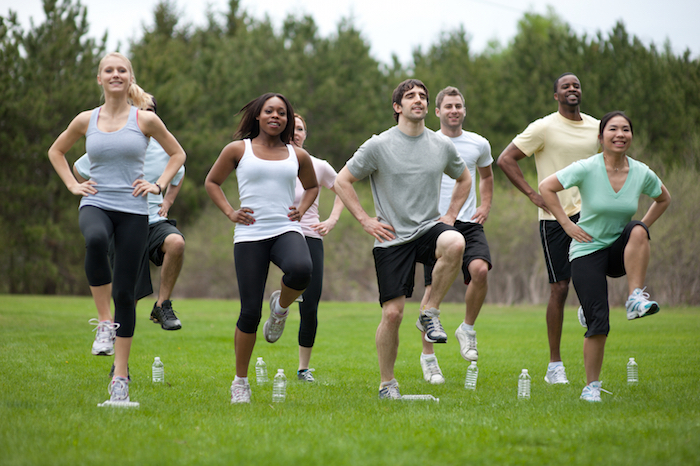Before diving into your daily workout, you need to make sure you are starting off with a proper, dynamic, warm-up. Warm-ups should be around 10-20 minutes, at least, and target all of the major muscle groups. A warm-up helps to increase muscle and core body temperatures, as well as improve blood flow and range of motion. An effective dynamic warm-up can even be adapted and used as a total body workout.
According to the National Strength and Conditioning Association (NSCA) an effective warm-up will help with faster contraction and relaxation of muscles, increase strength and power, increase blood flow to active muscles, improve your oxygen delivery, and enhance your metabolic reactions. All of which contribute to improved performance.
A common error individuals make, and a major research topic at the moment, is in regard to the timing of static and dynamic stretching with respect to the actual workout. Static stretching refers to reaching or bending to a point of slight discomfort and holding that position for several seconds, whereas dynamic stretching moves a body part through its full range of motion. It has yet to be proven that pre-activity, static stretching reduces the risk of injury. However, it has been shown that static stretching can decrease your strength, speed, and power if done prior to a workout. Static stretching, if done properly, is safe and contributes to gains in flexibility and range of motion, but it should be done after a workout. The theory behind this is that there are elastic components in your muscles and tendons, which work similarly to stretching a rubber band. Having a certain level of tension and tightness in these tissues helps the muscle contract and produce power. When you static stretch, these elastic parts become less springy, which can result in a temporary decrease in strength and power, both of which are important to a good workout.
Dynamic stretching should be done prior to your main workout. Here, at The Fitness Lab, we make sure to lead you through at least 15 minutes of dynamic stretching, gradually working on each body part and increasing in intensity. Some of the common exercises you will see us doing are neck rolls, arm circles, knee-to-chest, quad pulls, lunges, skips, and lateral shuffles. All of these, and many others, help to prepare you and your body for the workout ahead.
Source: Mark Kovacs, Dynamic Stretching, 2010, Ulysses Press

